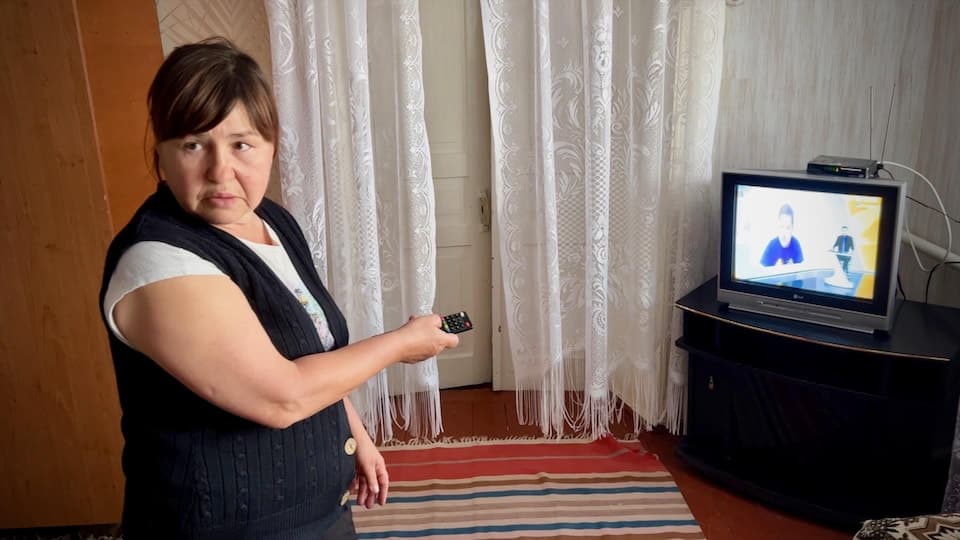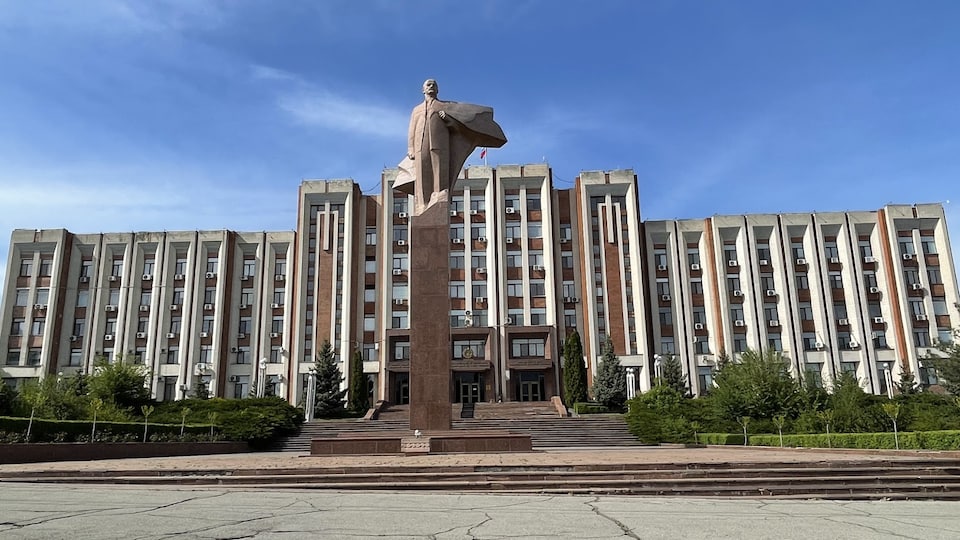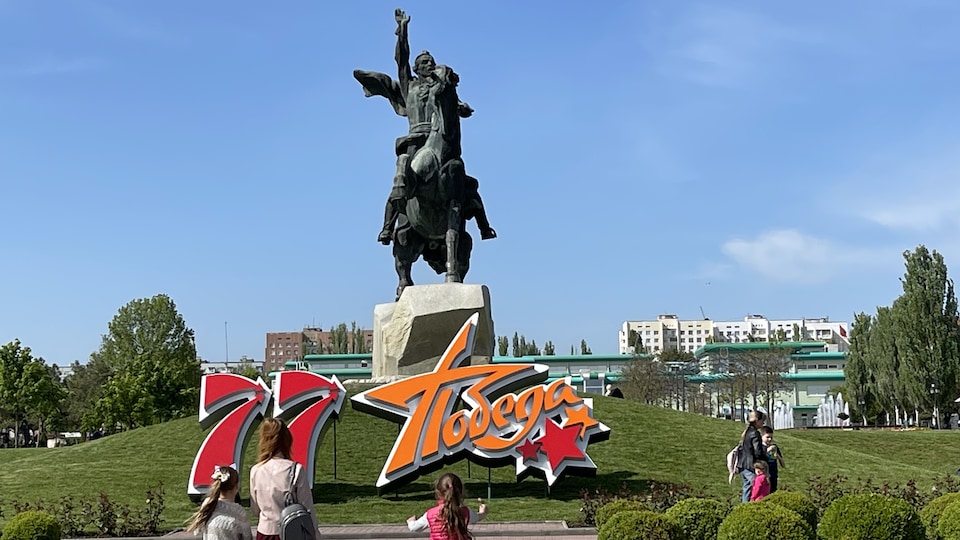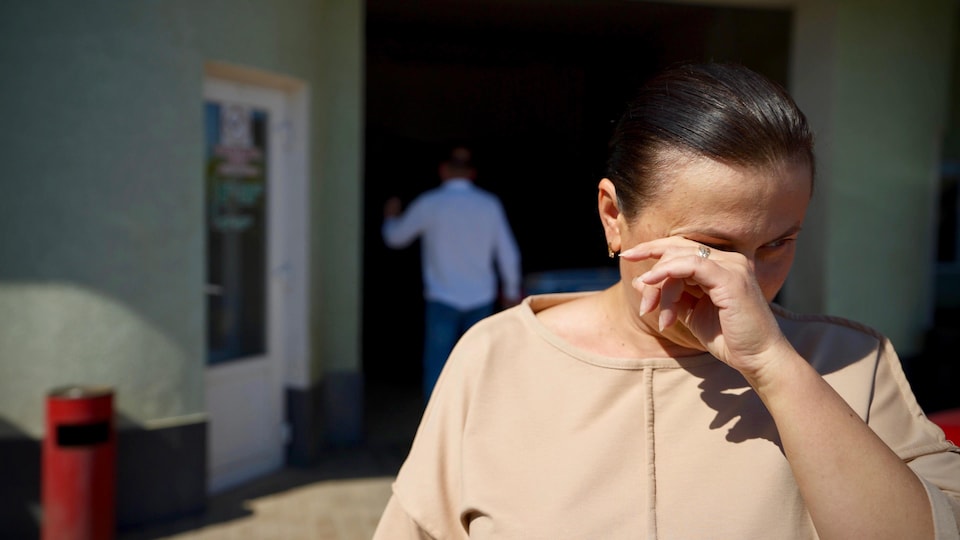There are sandbags, concrete blocks to slow down automobiles and many more soldiers than usual, we are told.
The small pro-Russian separatist enclave of Moldova has been on high alert since the end of April. Security has been tightened at all entry points after a series of mysterious explosions, two of which occurred as recently as Saturday last week, near the capital Tiraspol.
No one was injured, although two radio transmission towers were damaged, as well as a Ministry of Security building.
Who is hiding behind these attacks, which look like a provocation and a set-up?
Moscow cries terrorism and blames neighboring Ukraine. kyiv, for its part, blames the Kremlin and accuses it of wanting to destabilize the region.
We were finally able to negotiate permission to enter as tourists, free to roam and explore.
Beyond the dams, it is dead calm. The first village we cross exudes tranquility.
Dima, a father, scrapes the soil from his garden with his two little ones. It’s quiet, indeed
he said, but we are afraid
he adds, pointing to the left.
Ukraine is two kilometers away and they are Nazis. They can attack us at any time; they already did it a few weeks ago.
Its source? Russian television and word of mouth.
Like many other Russian speakers in Transnistria, Dima is loyal to news from Moscow. Russian propaganda is part of daily life in Transnistria, despite the sources of information available, such as Ukrainian and French channels.
Dima’s neighbor, Maria, is a retired woman with a certain outspokenness who opens the door to us without hesitation.
They are the ones who kill each other
, she said of Ukrainians watching TV. She swears by news from Russia.
” Obviously, Russia feeds us, Russia treats us well; we have been friends since the Soviet era. »
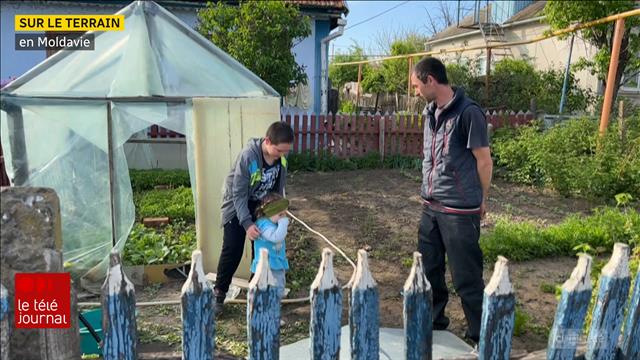
The report by Tamara Alteresco
Secession of Transnistria and Russian influence
Transnistria seceded from Moldova in 1992, during a four-day war that left 1,000 dead. Since this conflict, however, Moldovans and inhabitants of Transnistria have lived together in peace.
The autonomy of Transnistria has never been recognised, either by the international community or by Russia.
But it is largely thanks to the help of Moscow that the small territory of 500,000 inhabitants has survived for 30 years. More than 1,500 soldiers are stationed there year-round, under the aegis of a peacekeeping mission.
The capital, Tiraspol, is like the old Soviet cities, with its statue of Lenin frozen in time.
We were there on the eve of the 9th May VE Day celebrations last weekend. It was nice and hot; families strolled in the large central square of the city.
It’s hard to imagine the war spreading this far, let alone seeing these men, ice cream in hand or baby in arms, taking up arms to join Vladimir Putin’s war.
There is no “Z” here – this symbol of support for the Russian military intervention in Ukraine – as there is in the public space in Russia. However, there are many wreaths at the foot of the soldiers’ statues.
wish for peace
The majority of people who agreed to talk to us told us that they want peace, at home and in Ukraine.
We’re good here, we don’t want to get involved
says Galina, a 60-year-old woman who takes her daily walk in a park in Tiraspol.
The idea of being drawn into the conflict frightens her, but she is aware of the risk, since Odessa is only 100 kilometers away and is one of the targets of the Russian army.
The possibility that Vladimir Putin will use Transnistria to destabilize Moldova and open a new front there is of increasing concern to Washington, Europe and theUN.
These fears were amplified a few weeks ago when General Rustam Minnikhanov, a senior Russian army officer, said that one of the motivations for the “special operation” in southern Ukraine was to open a corridor to Transnistria.
” Control of southern Ukraine would establish a corridor to Transnistria, where there are also cases of oppression of the Russian-speaking population. »
For Galina, however, it is not about oppression. The sixty-year-old, on the other hand, believes that Ukraine is a threat. She is convinced that it is Ukraine that perpetrated the attacks since April 25, even if she has no proof.
Distraction, or pretext to invade Moldova?
Among the scenarios raised by observers is the possibility that the Kremlin will finally recognize the autonomy of Transnistria, as it did for the self-proclaimed republics of Donetsk and Lugansk a few days before invading Ukraine.
Such a move would give Russia the legitimacy
to send additional troops and artillery there to attack Odessa from the west.
But how?
wonders Moldovan political analyst Victor Ciobanu.
It’s almost impossible
since Moscow would need to parachute thousands of troops into Transnistria, crossing part of Ukraine’s airspace from Crimea, Ciobanu said.
Victor Ciobanu is all the more convinced that the Russian-speaking population of Transnistria has no appetite to engage in the conflict, he says.
” They lined up to get Moldovan and Romanian passports; it is phenomenal and that says a lot; this population does not want to get involved. »
If there is a danger, according to him, it is that Vladimir Putin will use Transnistria to invade Moldova. It’s possible, but certainly not imminent
he said.
Victor Ciobanu and several observers we have consulted consider such a scenario plausible only if Vladimir Putin opts for the general mobilization of the Russians in order to advance towards Odessa.
If the Russian leader succeeds in mobilizing 200,000 to 500,000 soldiers, we can apprehend this kind of escalation and a serious threat, but for the moment, this terrestrial corridor is not acquired for him, far from it
says the analyst again.
UN fears
Passing through Chișinău, the Moldovan capital, on Monday, the United Nations Secretary General did not hide his concern.
Moldova is the weakest neighbor
of Ukraine and the consequences of the Russian invasion are too scary
to be considered, said Antonio Guterres during a joint press briefing with the Moldovan Prime Minister.
Moldova is not a member ofNATO and, unlike Ukraine, it has only a very small army of around 7,800 soldiers to defend itself in the event of aggression.
The European Union, to which Moldova has submitted an application for membership, undertook on May 4 to provide it with more military support, under the circumstances. But Moldova’s President Maia Sandu is opting for caution and has appealed for calm.
Since being elected with a pro-European platform in December 2020, Ms Sandu has managed to maintain a certain neutrality towards Russia, on which Moldova depends for its gas supply.
The war in Ukraine, however, continues to test the limits of this neutrality.
What the government fears at the moment is the rise in tensions caused by various groups in Transnistria who have an interest in destabilizing the government
said President Sandu.
But according to Washington, the stakes would be larger. We assess that President Putin is preparing for a protracted conflict in Ukraine in which he still intends to achieve goals beyond Donbass
citing his desire to establish a land bridge from Crimea to Transnistria, the Biden administration has said.
Preparing for exile
Coming out of Transnistria, on the Moldavian side, we speak with Nikolai, an 18-year-old man.
He came from Tiraspol to deposit money in the bank, because he is thinking of going as far as possible, as hundreds of his age have done since the beginning of spring.
According to Nikolai, pro-Russian separatist forces have already started recruiting men in Transnistria, although we could not confirm this with leaders in the separatist territory.
It’s very stressful
he said. I do not want to fight.
Neither against the Ukrainians nor against the Moldavians, with whom he has lived in peace since birth.
At the garage next to the bank, Iluri accosts us, smiling and curious to see Canadians. The priority, for now, is to continue to arm Ukraine, as Canadians and civilized countries are doing
he said.
If the Ukrainian army resists and wins the war, the Moldovans will be protected, that’s guaranteed.
And otherwise?
Iluri’s wife, Ludmila, breaks down in tears. She is Ukrainian and inconsolable. She refuses to consider a defeat of her country. It’s out of the question, you understand, out of the question.
I live here, but my heart is there
she said, pointing to Ukraine.
Odessa is so close that on the morning of February 24, they both heard the first shelling from the Russian army. And with every bomb that falls in southern Ukraine, war is getting closer to them.
Ludmila takes out her bandera, a string instrument from Ukraine, and gives us an improvised show. It’s with music that she calms down these days.
Before the war, she worked for a choir in Transnistria, but she has refused to set foot there again since her boss told her that Ukraine deserved what was happening to her.
Ludmila says her 12-year-old daughter often asks her since the war started: Why, mom, would a country as big as Russia need Ukraine and little Moldova?
Weeks pass, the war continues and Ludmila still doesn’t know what to answer.
Reference-ici.radio-canada.ca
